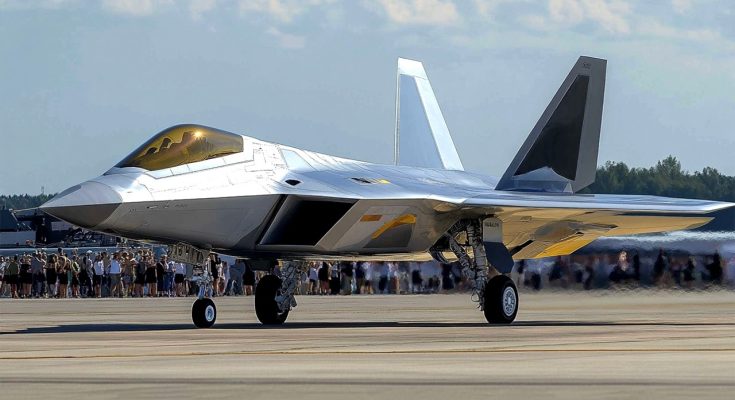The F-22 Raptor is one of the most advanced fighter jets in the world, and the idea of upgrading its capabilities to include hypersonic technologies has the potential to completely transform aerial warfare. While the U.S. Air Force has not officially disclosed any hypersonic upgrades to the F-22, speculation about such advancements in the fighter jet’s capabilities has generated considerable excitement. If such an upgrade were to occur, it would significantly enhance the F-22’s already impressive performance and could “shock the world” in terms of what modern air combat could look like.
What Does Hypersonic Mean?
The term hypersonic refers to speeds greater than Mach 5 (five times the speed of sound). At these speeds, an aircraft faces extreme aerodynamic and thermal challenges, as well as the need for highly specialized materials and systems to withstand the intense heat and pressure generated. Hypersonic speeds are not only an incredible feat of engineering, but they also drastically reduce the time it takes to reach targets, making interception or evasion extremely difficult.
Hypothetical F-22 Upgrade
If the F-22 were to be upgraded to incorporate hypersonic technologies, there are several key aspects that could be affected:
- Engines and Propulsion: The engines of the F-22, designed for high-speed and stealth performance at subsonic and supersonic speeds, would need a significant overhaul. A hypersonic propulsion system, such as a scramjet engine, would be required to push the aircraft beyond Mach 5. Scramjets operate by compressing incoming air at hypersonic speeds, allowing the aircraft to continue traveling at those extreme velocities without the traditional jet engines’ limitations.
- Speed and Maneuverability: With a hypersonic upgrade, the F-22 would be able to rapidly close in on targets or intercept hostile aircraft in a fraction of the time it currently takes. This would significantly enhance its capability to dominate the battlefield, both in offensive and defensive roles. However, while speed would increase, the aircraft would still need to maintain its renowned agility and stealth features, which are crucial for its success in dogfights and evasions.
- Weapons: The integration of hypersonic weapons would be a natural fit for an aircraft like the F-22. Hypersonic missiles, which travel faster than Mach 5, could potentially be mounted on the aircraft to give it unprecedented strike capabilities. These weapons would be incredibly hard to intercept and would allow the F-22 to target both ground and airborne threats with unmatched speed and precision.
- Stealth and Radar Signature: A major consideration for any hypersonic upgrade would be maintaining the aircraft’s stealth capabilities. At hypersonic speeds, there is a risk that the aircraft could generate a significant heat signature, making it easier for enemies to detect. Thus, maintaining the F-22’s low radar cross-section and thermal signature while reaching hypersonic speeds would be a significant engineering challenge.
- Weapon Delivery and Accuracy: Hypersonic speeds would reduce the time window for targeting, so ensuring precision targeting during such high-speed flight would be critical. Advanced avionics, radar systems, and guidance mechanisms would need to be integrated to allow the F-22 to deliver weapons effectively while operating at such extreme velocities.
Shock to the World
If such a hypersonic upgrade to the F-22 were revealed, it would be a game-changer for military aviation. The F-22 Raptor is already one of the most capable fighters in the world, with its combination of stealth, agility, and advanced avionics. Adding hypersonic speed to that mix would elevate it to a whole new level of performance and operational capability.
This would not only shock the world in terms of the F-22’s capabilities but would also send shockwaves through global military dynamics. Hypersonic aircraft would become the ultimate “edge” in aerial combat, and countries with the technology to build them would have a significant advantage in both conventional warfare and deterrence strategies.
The development of hypersonic aircraft could lead to a rethinking of how modern air combat is fought. It could render existing aircraft and defense systems obsolete and prompt adversaries to accelerate their own hypersonic research. Nations without this technology would be forced to adapt rapidly, potentially leading to a new arms race in the skies.
Conclusion
While there is no official confirmation of a hypersonic upgrade to the F-22 Raptor as of now, the potential of such an advancement is extraordinary. It would revolutionize air combat and showcase the U.S. military’s ongoing leadership in technological innovation. A hypersonic-capable F-22 would redefine the future of air superiority and challenge the conventional paradigms of modern warfare, making the world rethink what is possible in aerial combat. If this technology were realized, it would indeed shock the world in terms of speed, precision, and military dominance.



